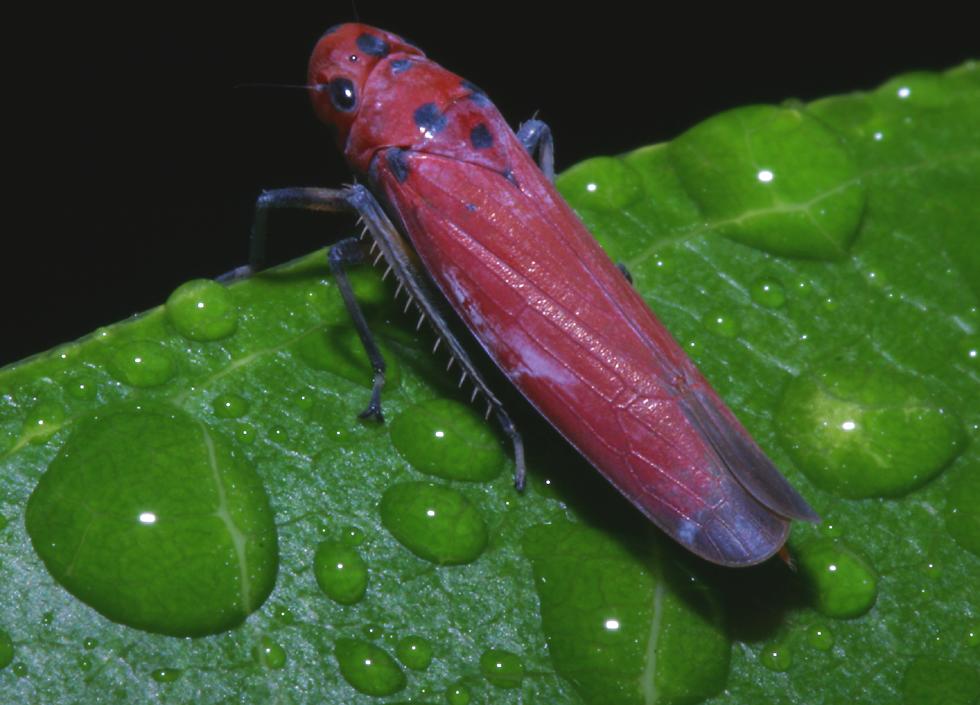TheBeesKnees
Well-known member
My one mantis nymph (presumably a Hierodula of some sort) is wild caught, and I give her wild caught food from the garden as well as from a field around my house. I've been finding these unusually large, red leaf hoppers that are everywhere in my garden, and about four or five of these a day would make for an adequate meal. However, their coloration raises some red flags.
I've never heard of a leaf hopper having toxic properties to ward off predators by--but I've also never seen a leaf hopper look quite like this before:

The species name is Bothrogonia indistincta, and besides that, I can't find any information on these little buggers.
If no one knows anything about them or their potential to kill my girl with toxicity, then I'll just not risk it. It would be a shame, though. These guys are plump and plentiful (I mistook them for a flighty kind of beetle at first) and are apparently even bad for my garden!
I've never heard of a leaf hopper having toxic properties to ward off predators by--but I've also never seen a leaf hopper look quite like this before:

The species name is Bothrogonia indistincta, and besides that, I can't find any information on these little buggers.
If no one knows anything about them or their potential to kill my girl with toxicity, then I'll just not risk it. It would be a shame, though. These guys are plump and plentiful (I mistook them for a flighty kind of beetle at first) and are apparently even bad for my garden!
Last edited by a moderator:












































